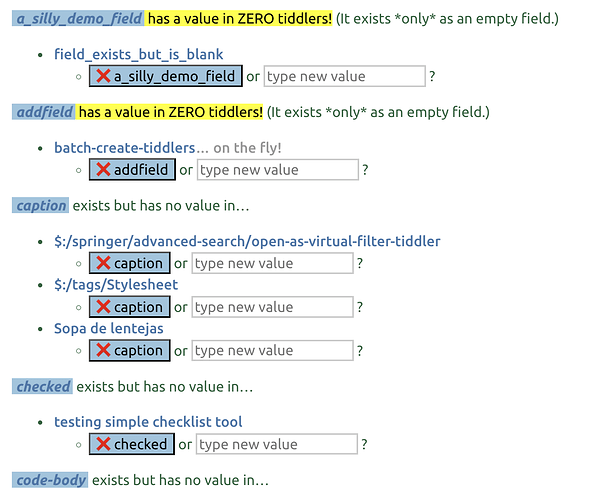Hello community,
I need to check for tiddlers which have an empty field value.
The field name is variable and generated with indices, like note1, note2, …
In the discussion I found a good reply from Eric Shulman, which works very well for hardcoded field names.
Has anyone an idea how this solution can be used with generated field names?
If there would be an opposite of the get-operator, one which only returns true for empty fields, I would be glad. But I’m afraid that there isn’t one (yet).
Thank you in advance for sharing your ideas.


